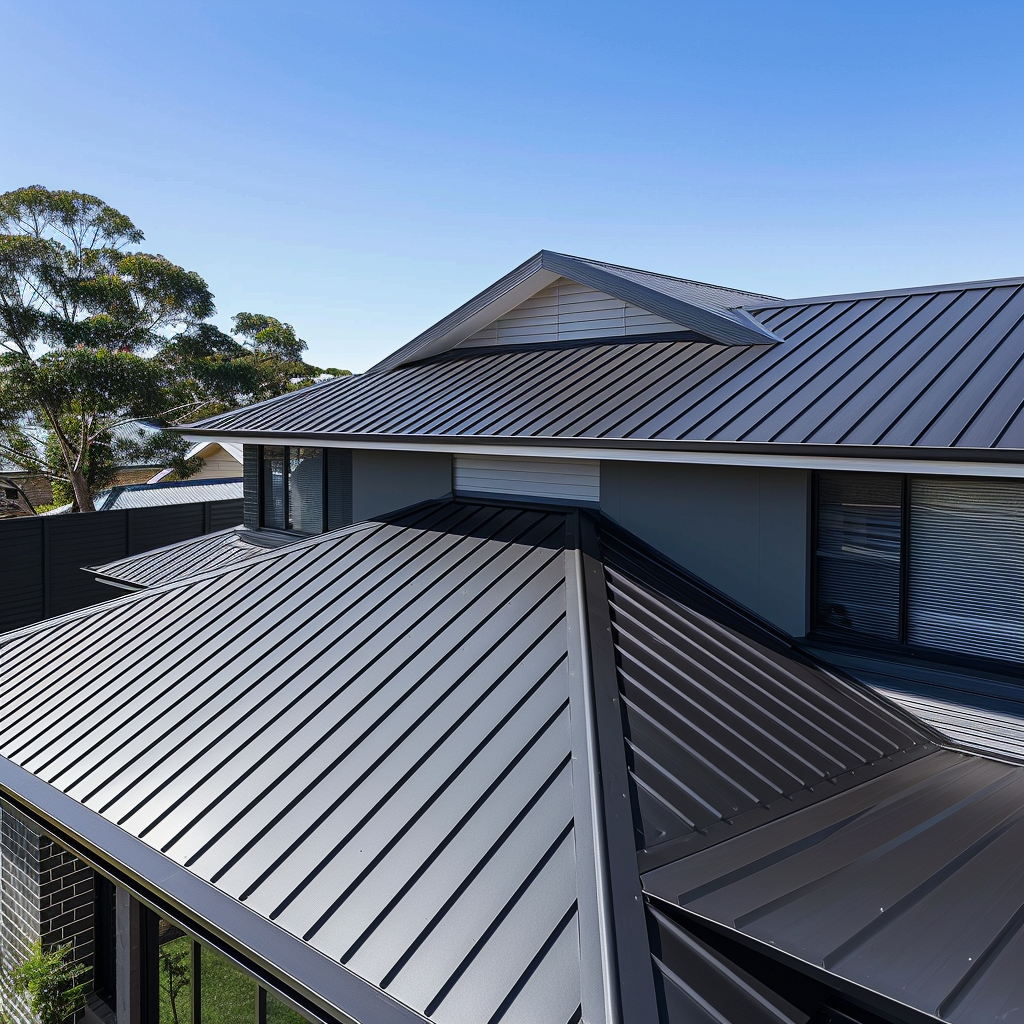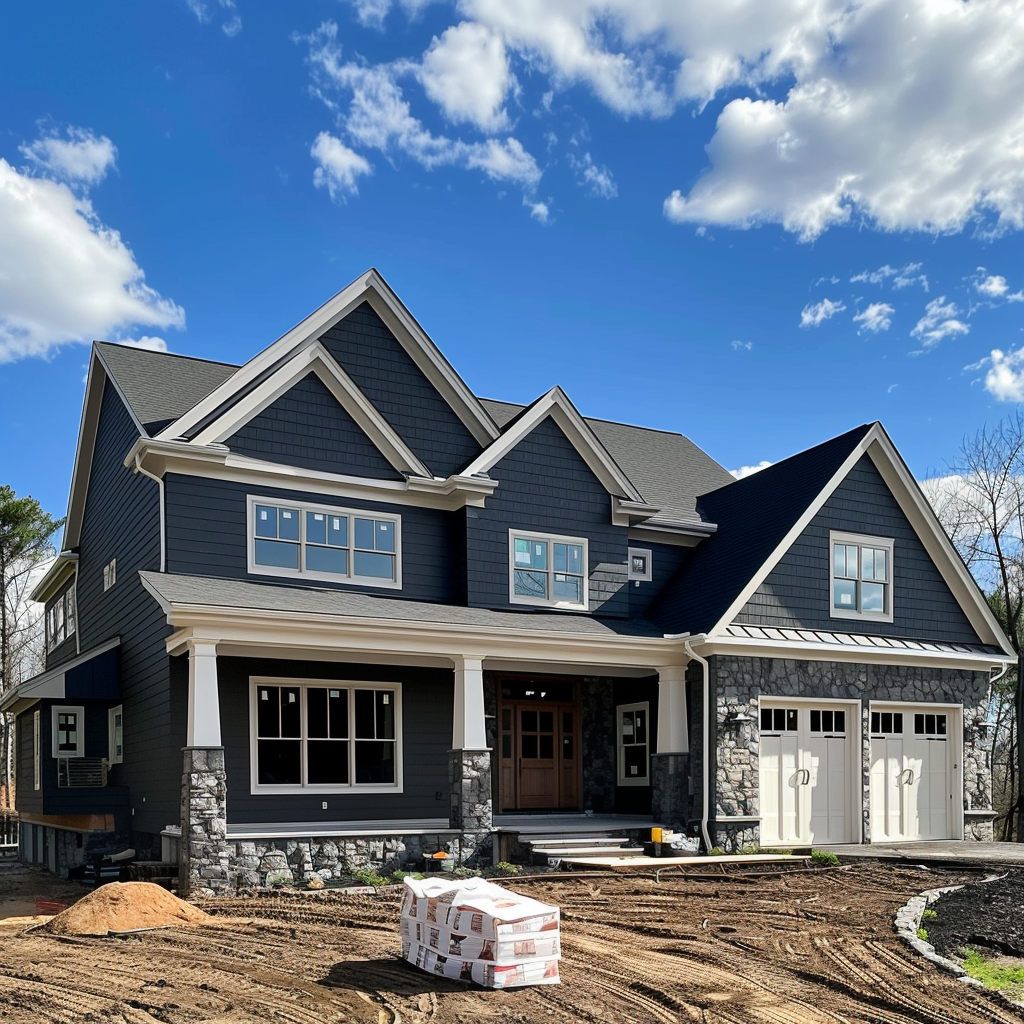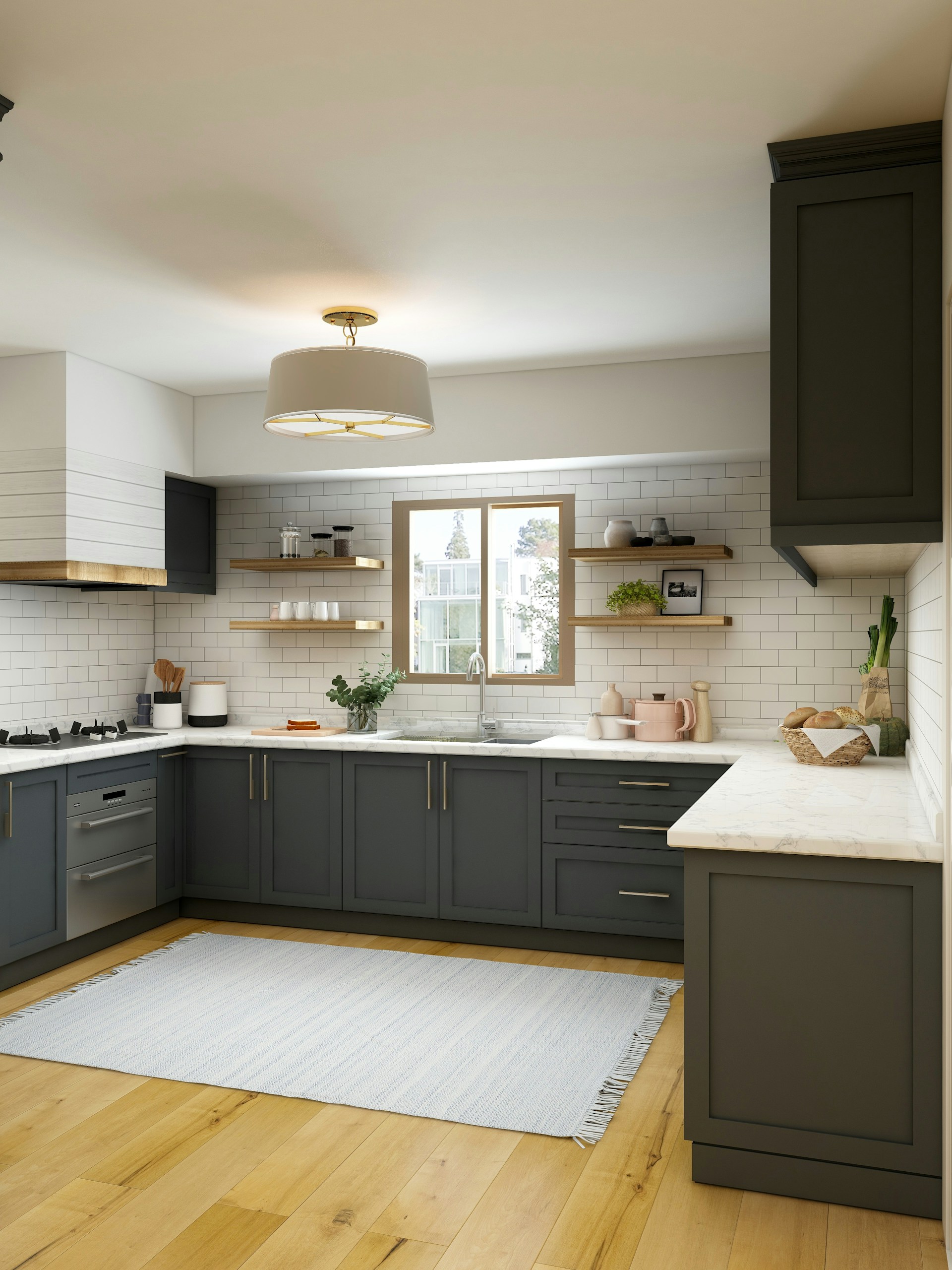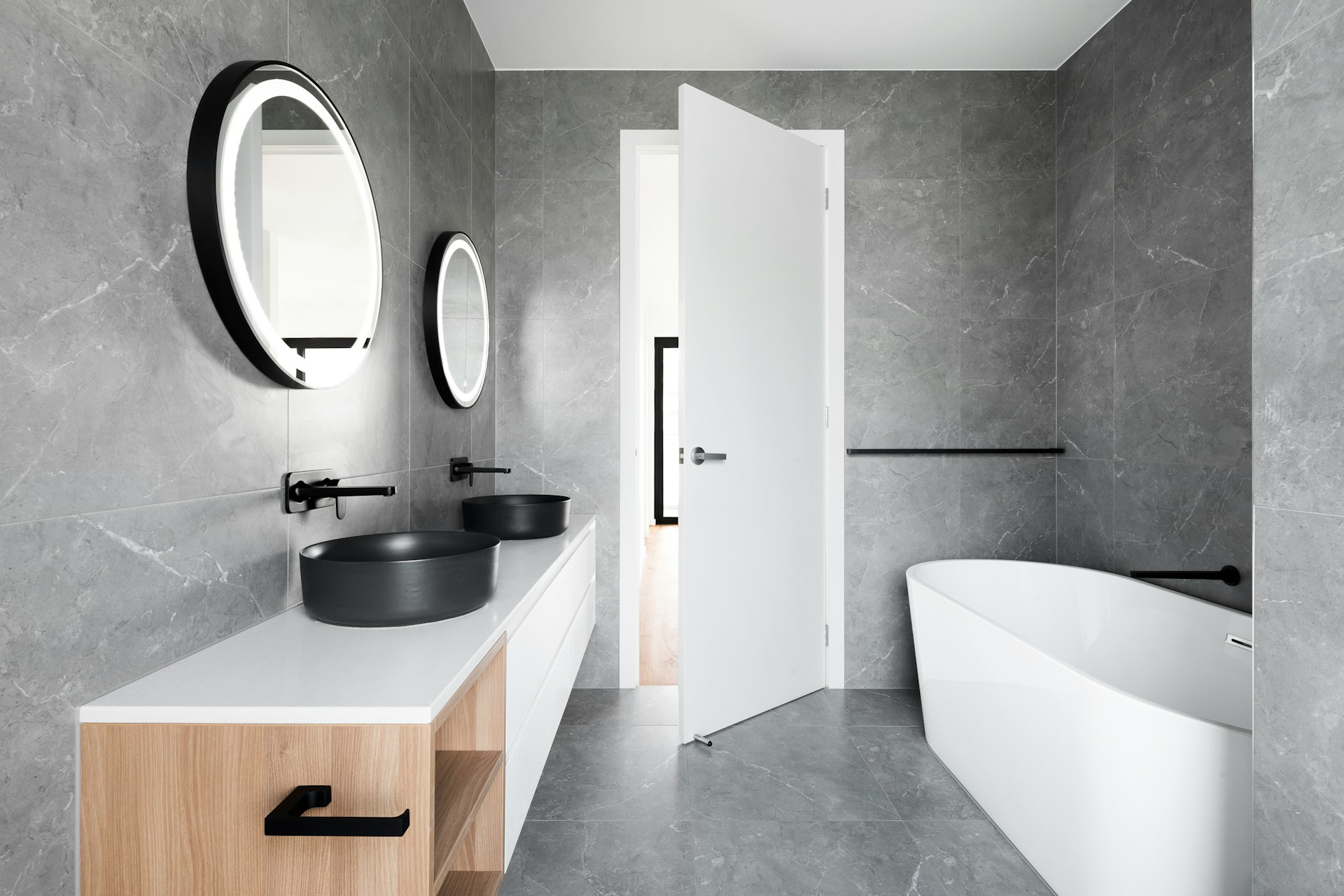
LANDCONNECT — 02 April 2024
Roof Types in Australia: Sheltering Beauty Down Under
Roofing Down Under: Harmonizing Style, Climate, and Community
In the vast and varied landscapes of Australia, the roof over your head does more than just protect you from the elements; it’s a statement of style, a guardian against the climate, and a pivotal choice in the sustainability of your home. From the iconic corrugated iron to the sleek, modern lines of metal roofing, the Australian skyline is a testament to the country’s diverse architectural tastes and environmental needs. This exploration into Australia’s most popular roof types offers insights into how Australians are covering their homes, balancing aesthetics, functionality, and eco-consciousness.
The Classic Corrugated Iron Roof
The corrugated iron roof holds a special place in the heart of Australian architecture, a nod to the country’s pioneering past and a testament to its enduring spirit. Renowned for its durability, it stands as a bulwark against Australia’s sometimes harsh and unpredictable weather, offering protection from heavy rainfalls to scorching sun. Its ease of installation and cost-effectiveness make it a go-to choice for homes and buildings across the nation. Moreover, the corrugated iron roof’s adaptability in style and color allows it to blend seamlessly into both rural and urban landscapes, making it a timeless choice for Australian homes.
The Elegant Terracotta Tiles
When it comes to marrying aesthetics with functionality, terracotta tiles hold a revered spot in Australian roofing. Their rich, earthy tones and natural finish offer a touch of elegance and warmth, elevating the visual appeal of any home.
| Feature | Terracotta Tiles | Concrete Tiles |
|---|---|---|
| Aesthetics | Warm, natural | Varied finishes |
| Longevity | Over 50 years | 30-50 years |
| Maintenance | Low | Moderate |
Beyond beauty, terracotta tiles boast excellent insulation properties, keeping homes cooler in summer and warmer in winter, a crucial feature in Australia’s varied climates. Their durability and low maintenance further cement their status as a premium roofing choice, capable of withstanding the test of time and elements.
The Modern Metal Roofing
The evolution of roofing materials has seen the rise of modern metal roofing, with Colorbond steel becoming a symbol of contemporary Australian design. Its versatility in color and form allows for innovative architectural expressions, from the sleek and modern to the traditional and timeless. Metal roofing’s key advantages include:
- Color Variety: An extensive palette to match any architectural style.
- Thermal Efficiency: Reflective coatings that contribute to energy savings.
- Eco-Friendly: Made from recyclable materials, it offers a sustainable roofing solution.
This roofing type has gained popularity for its strength, longevity, and the modern touch it adds to Australian homes, making it a preferred choice for new builds and renovations alike.
Sustainable Roofing Options
As the world leans towards more sustainable living practices, Australian homeowners are increasingly opting for eco-friendly roofing materials. Solar tiles and green roofs not only reduce a home’s carbon footprint but also offer remarkable energy savings.
| Material | Benefits | Environmental Impact |
|---|---|---|
| Solar Tiles | Energy generation, cost savings | Reduces energy consumption |
| Green Roofs | Insulation, biodiversity | Lowers urban heat island effect |
These options represent the cutting edge of roofing technology, combining functionality with environmental stewardship. By choosing sustainable roofing, Australians are contributing to a greener future, one roof at a time.
Choosing the Right Roof for Your Region
Australia’s diverse climate zones from the humid tropics to dry deserts, and temperate regions require careful consideration when selecting a roofing material. Here’s a quick guide:
- Tropical: Opt for materials that offer excellent ventilation and can withstand heavy rainfall, such as corrugated iron or metal roofing with reflective coatings.
- Arid: Choose light-colored roofs that reflect sunlight to keep homes cooler, like light-colored metal or terracotta tiles.
- Temperate: Consider tiles for their natural insulation properties, or metal roofing for its versatility and durability.
Understanding the climate-specific needs of your region can ensure your home remains comfortable and energy-efficient year-round.
Maintenance and Care Tips
To ensure the longevity and performance of your roof, regular maintenance is key. Here are a few tips:
- Corrugated Iron: Check for and promptly repair any signs of rust or corrosion.
- Terracotta Tiles: Clean gutters and downpipes regularly to prevent blockages.
- Metal Roofing: Inspect for scratches or dents that could lead to rust.
Proper care will extend the life of your roof and protect your home against the elements, making it a wise investment in the long run.
Roofing in New Estates: Meeting Design Guidelines
In Australia’s burgeoning new estates and communities, roofing choices often go beyond personal preference and environmental considerations. Developers of these planned communities typically establish design guidelines to ensure a cohesive and harmonious aesthetic throughout the neighborhood.
When building in a new estate, homeowners find themselves navigating a set of design guidelines put forth by developers. These guidelines are crafted to preserve the visual appeal of the community, enhance property values, and sometimes, to promote sustainability. They often specify acceptable roofing materials, colors, and sometimes even the pitch of the roof. For example, a developer might mandate the use of terracotta tiles in a certain color palette to maintain a Mediterranean feel throughout the estate, or require high-reflectivity metal roofing in eco-conscious communities to enhance energy efficiency.
Key Considerations When Choosing Roofing in New Estates:
- Design Compatibility: It’s imperative to select roofing materials that align with the architectural style prescribed by the estate’s guidelines. Whether the requirement leans towards traditional terracotta tiles for their rustic charm or modern metal roofing for a sleek finish, compatibility is key.
- Color Restrictions: Many estates specify a color palette to maintain visual harmony. Adhering to these color schemes ensures that your home complements its surroundings and meets estate standards.
- Sustainability Requirements: Eco-friendly building practices are becoming a staple in new developments. This might mean opting for solar tiles or choosing roofing materials with superior energy efficiency to align with sustainability goals.
Understanding these guidelines is crucial for homeowners for several reasons:
- Approval Process: Adhering to the guidelines ensures a smoother approval process for your building plans, preventing delays.
- Community Aesthetics: Compliance contributes to the overall aesthetic and atmosphere of the community, which is a selling point for many homeowners.
- Resale Value: Homes that align with the community’s design ethos tend to maintain or increase their resale value over time.
However, these guidelines don’t mean sacrificing individuality or preferences. Many developers offer a range of approved options, allowing homeowners to choose roofing materials and styles that not only meet the guidelines but also match their personal taste and functional needs. Innovative materials like Colorbond steel offer a variety of colors and finishes that can complement any architectural style while meeting the most common requirements found in new estate guidelines.
Navigating the design guidelines in new estates requires a careful balancing act between individual preferences, functional needs, and community standards. By understanding and working within these parameters, homeowners can achieve a roof that protects, enhances, and adds value to their home, all while contributing to the cohesive look and feel of their new community.
Wrapping It Up: Elevating Australian Homes
Choosing the right roof type is more than a practical decision; it’s a design statement, a climate consideration, an adherence to community standards, and increasingly, a reflection of environmental values. Whether it’s the rustic charm of corrugated iron, the elegance of terracotta tiles, the modern appeal of metal roofing, or the cutting-edge technology of sustainable options, the perfect roofing choice not only shelters but also reflects the identity of Australian homes and communities. In the vibrant tapestry of Australian architecture, each roof tells a story of adaptation, style, and forward-thinking, contributing to the unique character of our neighborhoods and the sustainability of our planet.


